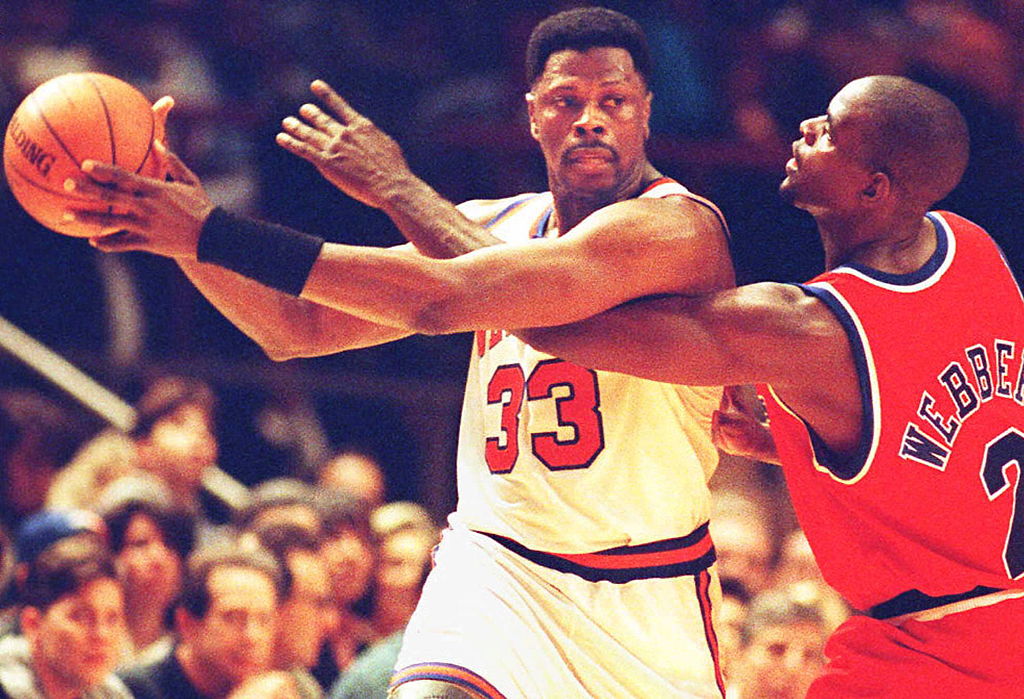NBA
Can We Please Put the Patrick Ewing Conspiracy Theory to Rest?

Major League Baseball has had actual major scandals in its past but still comes under less suspicion than the NBA when the topic is conspiracy theories that go to the core of credibility. With the 1985 NBA draft lottery now in the rear-view mirror by 35 years, it is time to let the crazy Patrick Ewing narrative die.
There have been real scandals in other sports
Major League Baseball somehow made it through last season with scarcely a mention that it was the 100th anniversary of the worst scandal in American team sports: the Black Sox scandal.
The 1919 World Series between the Chicago White Sox and Cincinnati Reds was forever tainted by allegations that eight members of the American League champions were paid by Arnold Rothstein to throw the series. A trial in 1921 ended in acquittals, but the damage had already been done.
Judge Kenesaw Mountain Landis, given virtually unlimited powers as commissioner by owners seeking to restore credibility to baseball, placed the eight accused players on baseball’s ineligible list, in effect ending their careers. Landis’ reasoning was that the acquittals didn’t change the fact that the players had met with gamblers and agreed to consider fixing games.
Baseball’s other scandals over the years have included the widespread use of steroids, widely presumed to have contributed to wildly inflated home run totals, and the more recent sign-stealing scandal involving the Houston Astros.
The Patrick Ewing conspiracy theory
Up through 1984, the NBA determined the first pick in its annual draft with a coin flip between the last-place teams in the league’s two conferences. The format was changed in 1985 to a lottery that gave all seven teams that missed the playoffs an equal shot at the No. 1 overall pick. With Patrick Ewing the most coveted player available, the presumption was that the Georgetown star would go to the team that landed the first pick.
The lottery, shown live on TV at halftime of a playoff game, consisted of an envelope for each team being placed in a drum. It would be up to commissioner David Stern to determine the winner with the first envelope pulled from the drum.
There are two prevailing theories from conspiracy theorists regarding how Stern pulled the Knicks’ card. The first is that Stern was able to feel a bent corner on the envelope. The second, more outlandish claim is that New York’s card had been kept in a freezer until shortly before the drawing so that Stern could detect it by its temperature.
Could the 1985 lottery have been fixed?
The New York Knicks had made the playoffs three of the previous four years, but 1984-85 season was already a disappointment even before star forward Bernard King suffered a serious knee injury two-thirds of the way through the season. Without him, they finished 24-58 and were facing the prospect of playing most if not all the next season without King.
That invited the speculation that NBA commissioner David Stern was driven to prop up the franchise by making sure the Knicks landed Patrick Ewing to speed up the rebuilding.
Ewing did help the franchise right itself, getting the franchise back to the postseason for 14 consecutive seasons beginning in 1988. Still, it is preposterous to think that Stern would have risked his own credibility, let alone the reputation of the NBA, by rigging the lottery for the sake of one team.
The NBA was already suffering from a reputation of widespread drug usage by players, but the arrival of Michael Jordan in 1984 was adding to the momentum brought about by Magic Johnson and Larry Bird.
To think that Stern would have risked it all just to steer one player to a particular team strains credibility, even if the conspiracy theory remains alive 35 years later.











